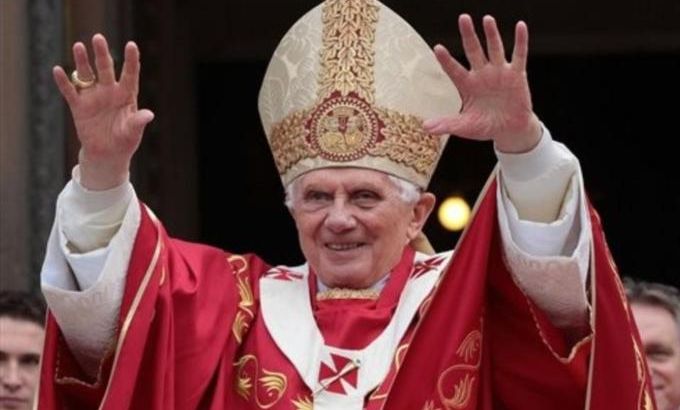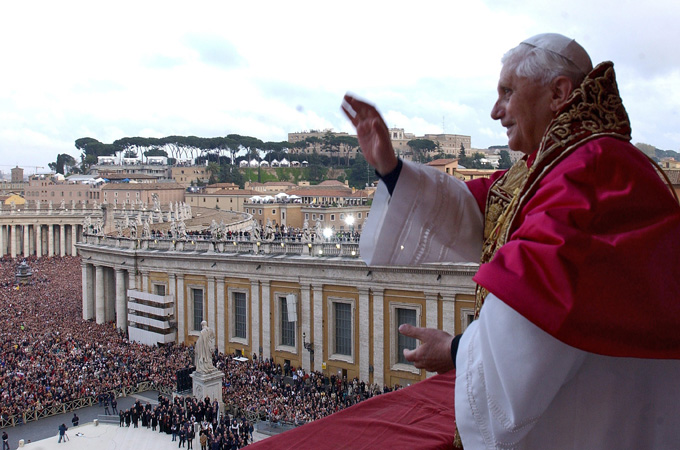Profile: Pope Benedict XVI
Resigning pope is known for his staunch traditionalism and strong defence of Catholic orthodoxy.

Benedict XVI, who has stepped down as pope, will be remembered as a defender of Roman Catholic orthodoxy and a staunch traditionalist.
The 85-year-old former pope, who said on Monday that he no longer has the strength to fulfil the office’s duties, succeeded the long-reigning and popular John Paul II in April 2005. His resignation, which a Vatican spokesperson said would happen on February 28, will make him the first pope to step down in centuries.
“I have had to recognise my incapacity to adequately fulfil the ministry entrusted to me,” the spiritual leader of the world’s 1.2 billion Catholics said.
His hardline approach, German nationality and age were all considered handicaps for Benedict, previously known as Cardinal Joseph Ratzinger, to become pope.
As head of the Congregation for the Doctrine of the Faith and then as pope, he opposed marriage for priests and the ordination of women. He likewise rejected homosexuality and communism, and had a proclivity for inflaming political sensibilities.
Benedict has also shown little regard for rock music, calling it “the expression of basic passions”.
Conservative views
As pope, Benedict embraced conservatism by repeatedly emphasising family values and strongly opposing abortion, euthanasia and gay marriage.
 |
| Benedict was named archbishop of Munich in 1977 [Reuters] |
The German intellectual might well be best remembered for his ability to offend many different groups, including Muslims, Jews, gays, AIDS activists and even scientists.
In a September 2006 speech, the German pope unleashed widespread anger in the form of violent protests across the Muslim world by seeming to endorse the opinion of a 14th-century Byzantine emperor who believed Islam is inherently violent.
He likewise incensed Jews in 2009 when he lifted the excommunication of four ultra-conservative bishops, including one who insists that no one died in Nazi gas chambers.
AIDS activists were likewise angered when he said weeks later on a trip to Africa – the region hardest hit by the AIDS pandemic – that condom use could be aggravating the crisis.
Son of a policeman
Born on April 16, 1927, in Bavaria’s Marktl am Inn in southern Germany, Benedict was the son of a policeman and was gradually drawn towards the priesthood. He entered a seminary in 1939, the same year he was required by the authorities to join the Hitler Youth movement.
He became an ordained priest at the same time as his older brother Georg in 1951, and began teaching theology at Freising College in 1958.
Benedict went on from there to teach at several other German universities, eventually catching the eye of Cologne Archbishop Joseph Frings, who subsequently brought him to Rome to work as an adviser to the Second Vatican Council from 1962 to 1965.
Pope Paul VI named Benedict archbishop of Munich in 1977, and made him a cardinal the same year, where he served for four years.
It was during the 1978 conclave of cardinals to elect a successor to Paul VI that he became friends with Karol Wojtyla, the future John Paul II.
Three years later he agreed to head the Vatican’s doctrinal congregation.
A quiet, almost shy person, Benedict never succeeded in generating the fervour enjoyed by John Paul II.
Instead, he shunned star status, once describing himself as “just the vicar” at the Roman Catholic Church’s periodic World Youth Days.
The Polish pope was greeted with enthusiasm bordering on hysteria at these events, and he did little to dampen down the adulation, to the consternation of some in the Church hierarchy.
The intellectual Benedict, an accomplished pianist, was also prolific writer.
Apart from three encyclicals, or instructions to the Roman Catholic flock, he wrote around 40 other works including a best-seller, “Jesus of Nazareth,” that contested political interpretations of Christ’s role.
The Church said that after his resignation, Benedict would be moved briefly to the Papal summer residence, and then to a cloistered residence in the Vatican.